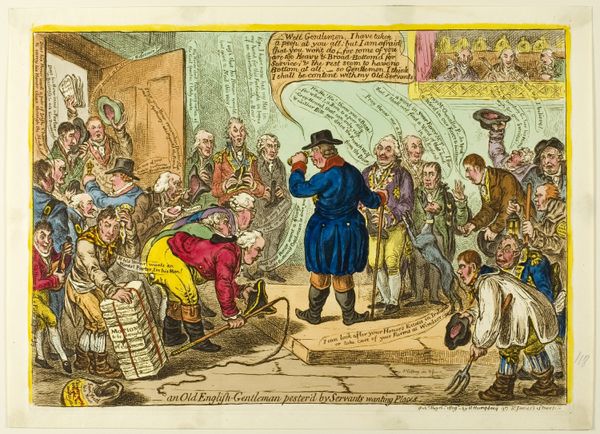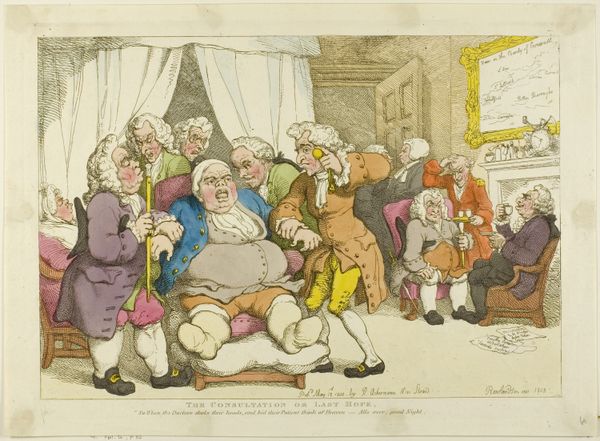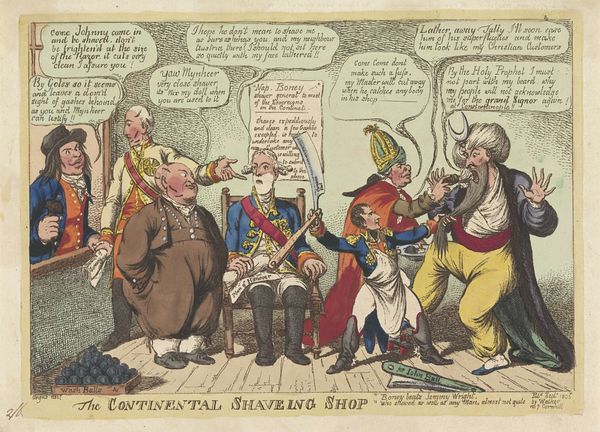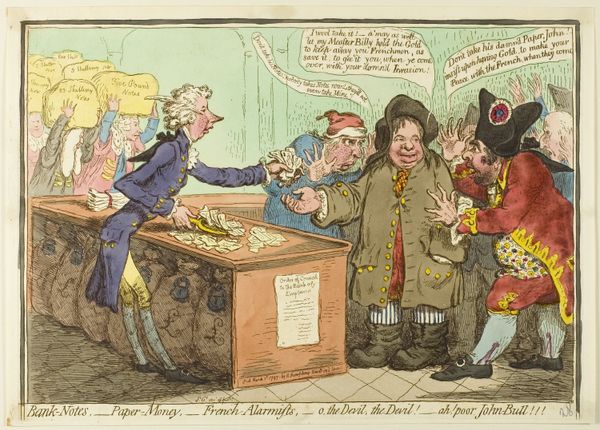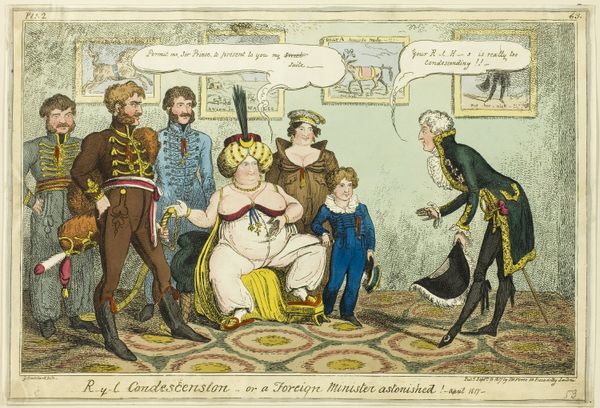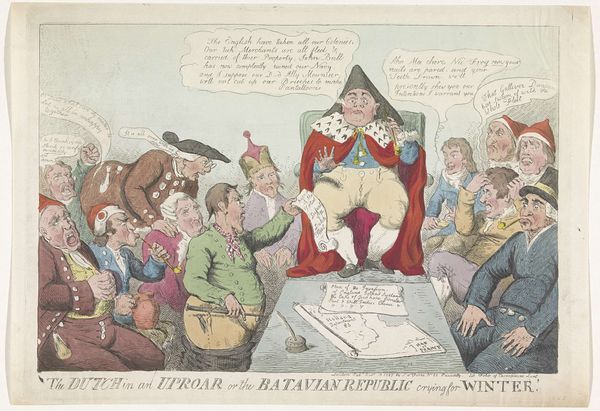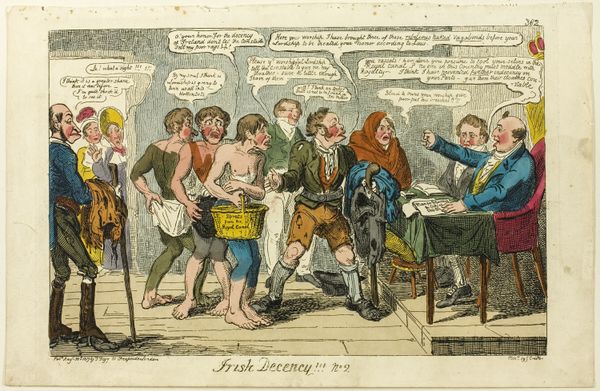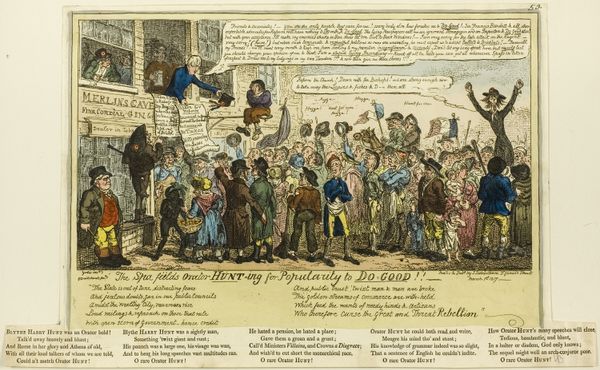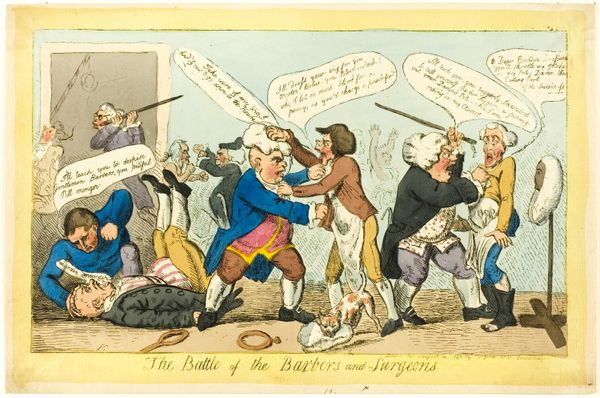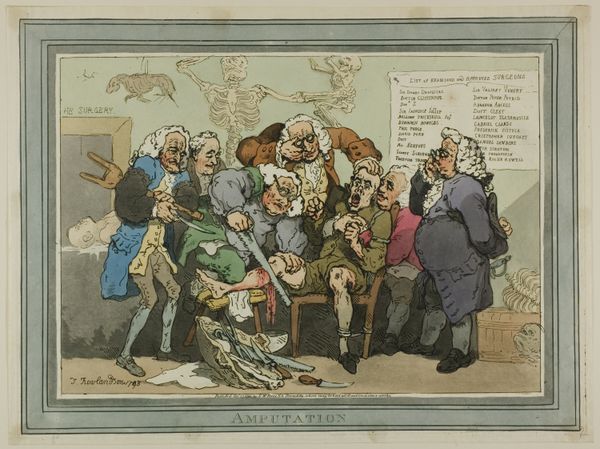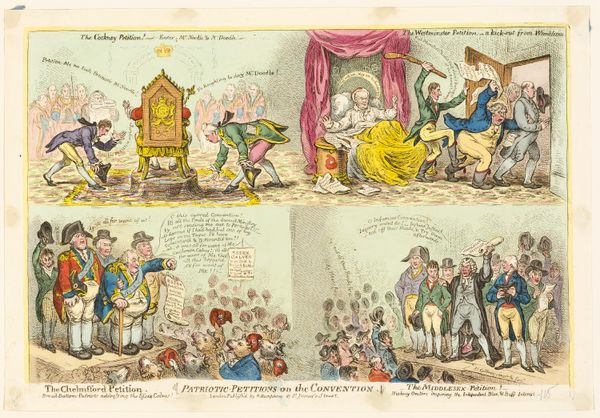
drawing, print, etching, paper
#
drawing
#
comic strip
# print
#
etching
#
caricature
#
paper
#
england
#
romanticism
#
history-painting
Dimensions: 242 × 344 mm (image); 247 × 350 mm (plate); 253 × 355 mm (sheet)
Copyright: Public Domain
Editor: This print is titled "The Elgin Marbles! or John Bull buying Stones at the time his numerous Family want Bread!!" created around 1816 by George Cruikshank. It's an etching, with drawing on paper, currently held at The Art Institute of Chicago. It's…striking. The contrast between the classical sculptures and the caricatured figures really grabs my attention. How do you interpret this work? Curator: It's a potent commentary on cultural priorities. Cruikshank’s print reflects the contentious acquisition of the Elgin Marbles, seen here on the left. What is immediately apparent is that the cartoon serves as sharp criticism of the British government, embodied as John Bull, prioritizing art acquisition –the stones– over the welfare of its people during economic hardship. Editor: So it's about misplaced values? Curator: Precisely. The family in the print embodies public sentiment. Their plea for bread underscores the perceived absurdity of investing in antiquities while citizens suffer. The work utilizes caricature, a key tool in Romantic-era social critique, to emphasize this disparity. We need to understand England’s relationship with ancient history at this moment too. Can you identify the political discourse here? Editor: The acquisition being criticized represents more than art collecting; it suggests a certain cultural imperialism, perhaps? Curator: Excellent point. The print raises crucial questions about the role of art in society. Is it a luxury for the elite, or a source of national pride, or perhaps something that is robbed from its original place to become a symbolic asset in the buyer's country? Editor: I never considered this. I initially focused on the visual contrast but now, with the added historical and political perspective, I grasp the deeper meaning embedded in Cruikshank's piece. Curator: Exactly, by understanding its context and historical reception we gained richer insight. Art exists within the social fabric of the period.
Comments
No comments
Be the first to comment and join the conversation on the ultimate creative platform.
